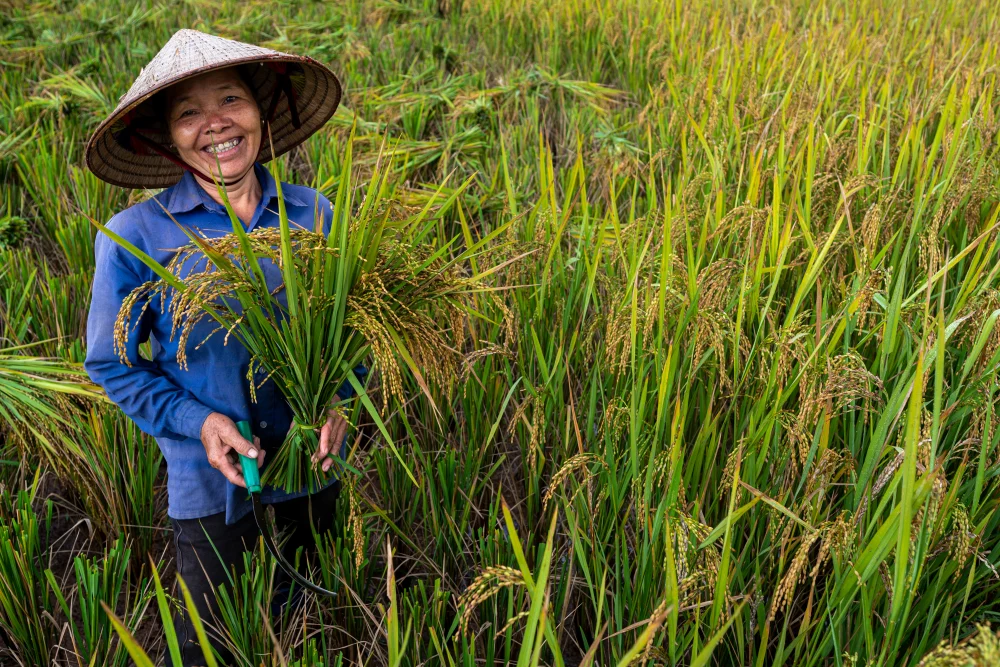Welcome to CGSpace
Identify, locate and download research and other outputs produced across CGIAR and its partners.
Content is organized in communities and collections and includes outputs from CGIAR’s current research and innovation portfolio, outputs of CGIAR research centers and hosted content of other organizations and programs. Read more about the content we hold.
Our Research Collections
Research Themes
Recent Submissions
Assessing and projecting land use land cover changes using machine learning and artificial neural network models in Guder watershed, Ethiopia
(Journal Article, 2024-12-25) Demessie, Sintayehu Fetene; Dile, Yihun T.; Bedadi, Bobe; Tarkegn, Temesgen Gashaw; Bayabil, Haimanote Kebede; Dejene, Sintayehu Workeneh
This study investigates the trends and frequencies of Land Use Land Cover (LULC) changes in the Guder watershed, located in the Upper Blue Nile Basin (Ethiopia), for the periods 1985 and 2021, with projections for 2039 and 2057. The research utilizes an integrated approach combining remote sensing (RS) and GIS for spatial analysis, Google Earth Engine (GEE) for cloud-based data processing, Random Forest (RF) machine learning for historical LULC classification, and an artificial neural network (ANN) model via QGIS's MOLUSCE tool for future LULC predictions. This innovative methodological approch allows for the examination of spatial and temporal LULC change patterns and future projections in the watershed. The results indicate that cultivated land increased from 54.8 % in 1985 to 72.9 % in 2021, and the built-up area experienced a significant increase of 227.5 % during this period. Percentage of land covered by forests fell from 35.9 % in 1985 to 9 % in 2021. By 2039 and 2057, shrubland, forest, and grassland are expected to decrease, while built-up and cultivated land will increase. Specifically, shrubland will decrease from 12.4 % in 2021 to 10.1 % in 2039 and 8.7 % in 2057, grassland from 4.8 % in 2021 to 1.9 % in 2039 and 1.1 % in 2057, and forest from 9.0 % in 2021 to 8.9 % in 2039 and 7.9 % in 2057. Meanwhile, the built-up area will rise significantly from 0.8 % in 2021 to 3.6 % in 2057. These shifts profoundly impact environmental management in the watershed. The motivation behind the present research was to provide a thorough understanding on LULC dynamics to improve land management practices using machine learning and ANN models for current and future environmental changes. Strategic interventions are crucial to mitigate adverse trends and promote sustainable land management based on current scenarios and future projections.
From uncertainty to precarity: moral economy practices among the Somali community in Kakuma refugee camp
(Working Paper, 2024-12) Mohamed, Bashir; Derbyshire, Samuel F.
Tangled crises in Turkana: investigating the spread of Prosopis in Kenya's northern drylands
(Journal Article, 2023-12) Derbyshire, Samuel F.; Leakey, Acacia; Lowasa, Lucas
Date palm diverts organic solutes for root osmotic adjustment and protects leaves from oxidative damage in early drought acclimation
(Journal Article, 2024-11-10) Franzisky, Bastian L; Mueller, Heike M; Du, Baoguo; Lux, Thomas; White, Philip J; Carpentier, Sebastien Christian; Winkler, Jana Barbro; Schnitzler, Joerg-Peter; Kudla, Jörg; Kangasjärvi, Jaakko; Reichelt, Michael; Mithöfer, Axel; Mayer, Klaus F X; Rennenberg, Heinz; Ache, Peter; Hedrich, Rainer; Messerer, Maxim; Geilfus, Christoph-Martin
Date palm (Phoenix dactylifera L.) is an important crop in arid regions that is well-adapted to desert ecosystems. To understand the remarkable ability to grow and yield in water-limited environments, experiments with water-withholding for up to four weeks were conducted. In response to drought, root, rather than leaf, osmotic strength increased, with organic solutes such as sugars and amino acids contributing more to the osmolyte increase than minerals. Consistently, carbon and amino acid metabolism was acclimated toward biosynthesis at both the transcriptional and translational levels. In leaves, a remodeling of membrane systems was observed, suggesting changes in thylakoid lipid composition, which together with the restructuring of the photosynthetic apparatus, indicated an acclimation preventing oxidative damage. Thus, xerophilic date palm avoids oxidative damage under drought by combined prevention and rapid detoxification of oxygen radicals. Although minerals were expected to serve as cheap key osmotics, date palm also relies on organic osmolytes for osmotic adjustment of the roots during early drought acclimation. The diversion of these resources away from growth is consistent with date palm's strategy of generally slow growth in harsh environments and clearly indicates a trade-off between growth and stress-related physiological responses.
Urban climate resilience in Africa: A review of nature-based solution in African cities' adaptation plans
(Journal Article, 2024-05-16) Kiribou, Razak; Dejene, Sintayehu; Bedadi, Bobe; Ntirenganya, Elie; Ndemere, Julius; Dimobe, Kangbéni
Cities are globally exposed to climate change effects, which revealed that 55% of the world's population is at risk. Despite their low contribution to global greenhouse gas emissions, African cities are paying the highest cost of the threats caused by climate change due to their rapid urban community growth, high population density, and inadequate urban planning. This review has explored and demonstrated the benefit of Nature-based Solutions (NbS) implementation for urban climate crisis resilience that have been implemented globally for sharing information on sustainable city planning in Africa. The analysis is based on the African countries’ Nationally Determined Contribution (NDC) reports, the institution’s review, and scientific articles. The successful implementation of NbS since 2015 in developed countries confirms that NbS has a multi-functional environmental benefit for urban and pre-urban populations. It reduces cities' vulnerability to climate threats and advances numerous Sustainable Development Goals (SDGs) achievement. It revealed only 15 (27,7%) African countries have implemented NbS with 119 projects to adapt and tackle climate change in water, agriculture, forest and woodland, coastal and marine habitat, grassland, and mountain habitat sectors. Rural areas are paid more attention than cities despite the rapid urbanization in the face of extreme climate effects. Furthermore, the review process observed some challenges in translating the approaches of NbS into measurable actions for African urban climate resilience: (i) issues in the governance of urban planning and policies; (ii) insufficient mobilization of resources and lack of private sector involvement in financing NbS; and (iii) lack of comprehensive evidence-based strategies and knowledge for successful operationalization of NbS in African cities.



